Hoshizaki KM-901MAJ, KM-901MWJ, KM-1100MAJ, KM-1100 MWJ Service Manual
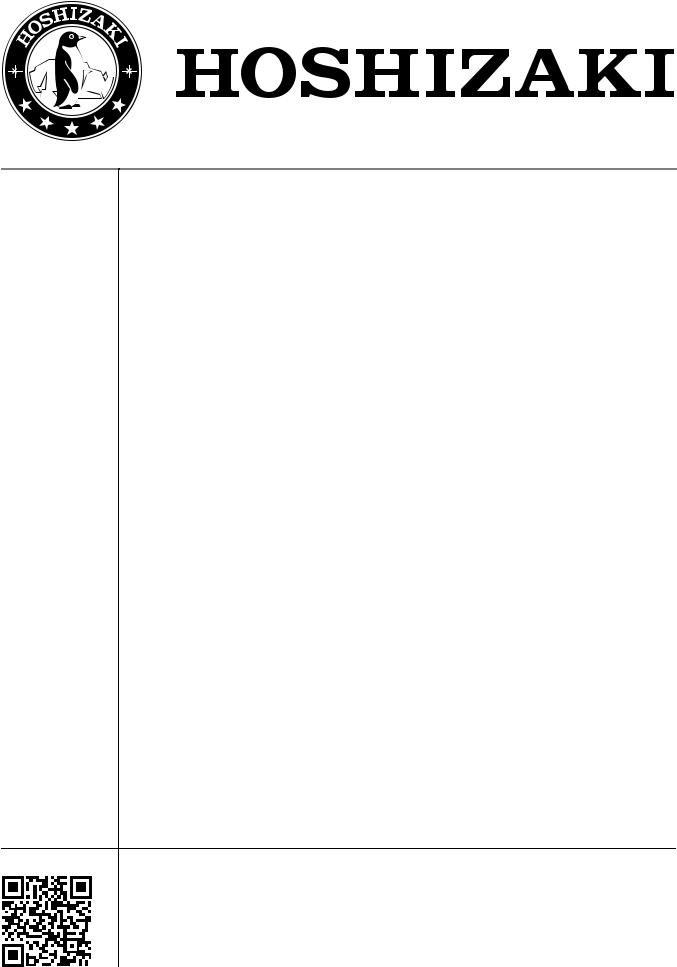
Service Manual
Modular Crescent Cuber
Models
KM-901MAJ, MWJ, MRJ/3 KM-1100MAJ, MWJ, MRJ KM-1340MAJ, MWJ, MRJ/3 KM-1601MRJ/3
Number: 73213
hoshizakiamerica.com Issued: 1-30-2018
Revision: 9-18-2018
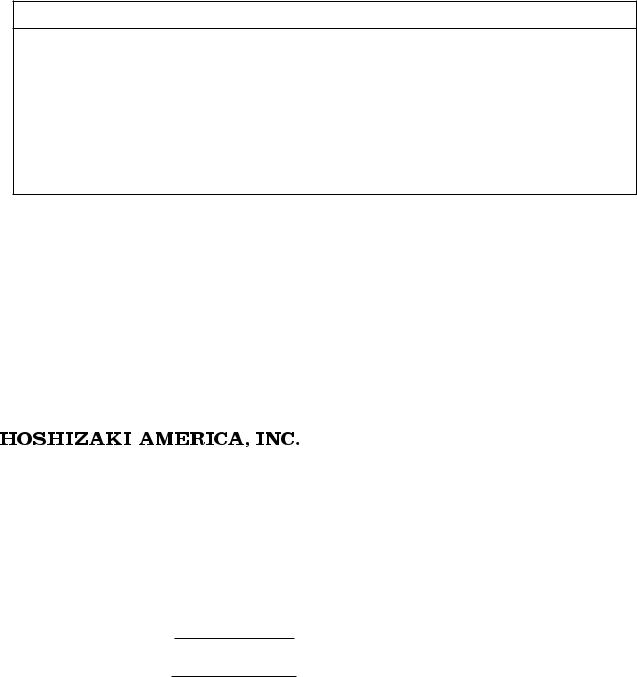
 WARNING
WARNING
Only qualified service technicians should install and service the appliance. To obtain the name and phone number of your local Hoshizaki Certified Service
Representative, visit www.hoshizaki.com. No service should be undertaken until the technician has thoroughly read this Service Manual. Failure to service and maintain the appliance in accordance with this manual will adversely affect safety, performance, component life, and warranty coverage. Proper installation is the responsibility of the installer. Product failure or property damage due to improper installation is not covered under warranty.
Hoshizaki provides this manual primarily to assist qualified service technicians in the service of the appliance.
Should the reader have any questions or concerns which have not been satisfactorily addressed, please call, send an e-mail message, or write to the Hoshizaki Technical
Support Department for assistance.
Phone: 1-800-233-1940; (770) 487-2331
Fax: 1-800-843-1056; (770) 487-3360
E-mail: techsupport@hoshizaki.com
618 Highway 74 South
Peachtree City, GA 30269
Attn: Hoshizaki Technical Support Department
Web Site: www.hoshizaki.com
NOTE: To expedite assistance, all correspondence/communication MUST include the following information:
•Model Number
•Serial Number
•Complete and detailed explanation of the problem.
2

IMPORTANT |
|
This manual should be read carefully before the appliance is serviced. Read |
|
the warnings and guidelines contained in this manual carefully as they provide |
|
essential information for the continued safe use, service, and maintenance of the |
|
appliance. Retain this manual for any further reference that may be necessary. |
|
CONTENTS |
|
Important Safety Information.................................................................................................. |
5 |
I. Construction and Water/Refrigeration Circuit Diagram........................................................ |
7 |
A. Construction................................................................................................................... |
7 |
1. Air-Cooled Models (MAJ).......................................................................................... |
7 |
2. Water-Cooled Models (MWJ)................................................................................... |
8 |
3. Remote Models (MRJ/3).......................................................................................... |
9 |
B. Water/Refrigeration Circuit Diagram............................................................................ |
10 |
1. Air-Cooled Models (MAJ)........................................................................................ |
10 |
2. Water-Cooled Models (MWJ).................................................................................. |
11 |
3. Remote Models (MRJ/3)........................................................................................ |
12 |
II. Sequence of Operation and Service Diagnosis................................................................ |
13 |
A. Sequence of Operation Flow Chart............................................................................. |
13 |
B. Service Diagnosis........................................................................................................ |
16 |
C. Freeze-Time Correction Cycle (90 min.) (Control Board 2A7664-02).......................... |
23 |
D. Control Board Check.................................................................................................... |
25 |
E. Bin Control Check........................................................................................................ |
26 |
F. Float Switch Check and Cleaning................................................................................. |
27 |
1. Float Switch Check................................................................................................. |
27 |
2. Float Switch Cleaning............................................................................................ |
28 |
G. Thermistor Check........................................................................................................ |
29 |
H. Control Switch.............................................................................................................. |
29 |
I. Diagnostic Tables.......................................................................................................... |
30 |
J. Freeze-Up Check List................................................................................................... |
34 |
III. Controls and Adjustments................................................................................................ |
35 |
A. Control Board Layout................................................................................................... |
36 |
B. LED Lights and Audible Alarm Safeties....................................................................... |
37 |
C. Settings and Adjustments............................................................................................ |
38 |
1. Default Dip Switch Settings..................................................................................... |
38 |
2. Harvest Timer (S4 dip switch 1 & 2)....................................................................... |
39 |
3. Pump-Out Timer/Harvest Time During Pump-Out (S4 dip switch 3 & 4)................ |
39 |
4. Pump-Out Frequency Control (S4 dip switch 5)..................................................... |
40 |
5. Harvest Pump Time (Harvest Assist) (S4 dip switch 6).......................................... |
40 |
6. Harvest Pump Time (Harvest Assist)/Freeze-Time Correction (S4 dip switch 7)... |
41 |
7. Factory Use (S4 dip switch 8)................................................................................. |
41 |
8. Freeze Timer (S4 dip switch 9 & 10)....................................................................... |
42 |
9. Float Switch Selector (S5 dip switch 1).................................................................. |
42 |
10. Refill Counter (S5 dip switch 2 and 3).................................................................. |
42 |
11. Minimum Harvest Time (S5 dip switch 4).............................................................. |
43 |
12. Anti-Slush (S5 dip switch 5).................................................................................. |
43 |
D. Control Switch.............................................................................................................. |
43 |
3
IV. Refrigeration Circuit and Component Service Information.............................................. |
44 |
A. Refrigeration Circuit Service Information..................................................................... |
44 |
B. Component Service Information.................................................................................. |
47 |
C. Water Regulating Valve Adjustment (water-cooled model)........................................... |
47 |
V. Maintenance..................................................................................................................... |
48 |
VI. Preparing the Appliance for Periods of Non-Use............................................................. |
49 |
VII. Disposal......................................................................................................................... |
51 |
VIII. Technical Information.................................................................................................... |
52 |
A. Specification and Performance Data Sheets............................................................... |
52 |
1. KM-901MAJ............................................................................................................ |
52 |
2. KM-901MWJ........................................................................................................... |
53 |
3. KM-901MRJ with URC-14F.................................................................................... |
54 |
4. KM-901MRJ3 with URC-14F.................................................................................. |
55 |
5. KM-1100MAJ.......................................................................................................... |
56 |
6. KM-1100MWJ......................................................................................................... |
57 |
7. KM-1100MRJ with URC-14F................................................................................... |
58 |
8. KM-1340MAJ.......................................................................................................... |
59 |
9. KM-1340MWJ......................................................................................................... |
60 |
10. KM-1340MRJ with URC-14F................................................................................ |
61 |
11. KM-1340MRJ3 with URC-14F............................................................................... |
62 |
12. KM-1601MRJ with URC-22F................................................................................ |
63 |
13. KM-1601MRJ3 with URC-22F.............................................................................. |
64 |
B. Wiring Diagrams ......................................................................................................... |
65 |
1. KM-901M_J, KM-1100M_J...................................................................................... |
65 |
2. KM-1340M_J and KM-1601MRJ............................................................................ |
66 |
3. KM-901MRJ3......................................................................................................... |
67 |
4. KM-1340MRJ3 and KM-1601MRJ3........................................................................ |
68 |
4
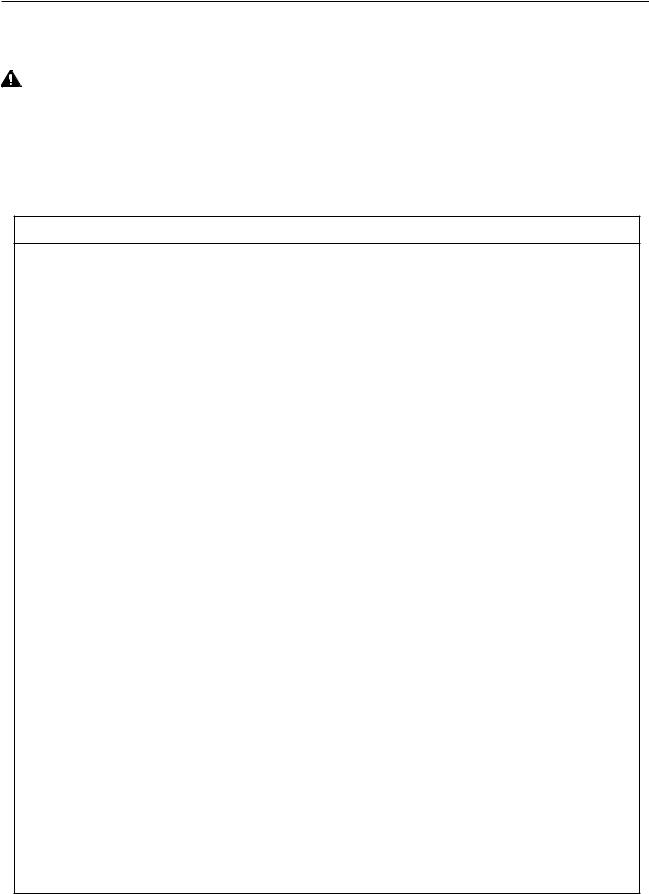
Important Safety Information
Throughout this manual, notices appear to bring your attention to situations which could result in death, serious injury, damage to the appliance, or damage to property.
WARNING |
Indicates a hazardous situation which could result in death or |
|
serious injury. |
NOTICE |
Indicates a situation which could result in damage to the |
|
appliance or property. |
IMPORTANT |
Indicates important information about the use and care of the |
|
appliance. |
 WARNING
WARNING
The appliance should be destined only to the use for which it has been expressly conceived. Any other use should be considered improper and therefore dangerous. The manufacturer cannot be held responsible for injury or damage resulting from improper, incorrect, and unreasonable use. Failure to service and maintain the appliance in accordance with this manual will adversely affect safety, performance, component life, and warranty coverage and may result in costly water damage.
To reduce the risk of death, electric shock, serious injury, or fire, follow basic precautions including the following:
•Only qualified service technicians should install and service this appliance.
•The appliance must be installed in accordance with applicable national, state, and local codes and regulations.
•Electrical connection must be hard-wired and must meet national, state, and local electrical code requirements. Failure to meet these code requirements could result in death, electric shock, serious injury, fire, or severe damage to equipment.
•The icemaker requires an independent power supply of proper capacity. See the
nameplate for electrical specifications. Failure to use an independent power supply of proper capacity can result in a tripped breaker, blown fuses, damage to existing wiring, or component failure. This could lead to heat generation or fire.
•THE ICEMAKER MUST BE GROUNDED. Failure to properly ground the icemaker could result in death or serious injury.
•Move the control switch to the "OFF" position and turn off the power supply before servicing. Lockout/Tagout to prevent the power supply from being turned back on inadvertently.
•To reduce the risk of electric shock, do not touch the control switch with damp hands.
•Do not make any alterations to the unit. Alterations could result in electric shock, injury, fire, or damage to the unit.
•The appliance is not intended for use by persons (including children) with reduced physical, sensory, or mental capabilities, or lack of experience and knowledge, unless they have been given supervision or instruction concerning use of the appliance by a person responsible for their safety.
5

 WARNING, continued
WARNING, continued
•Children should be properly supervised around this appliance.
•Do not climb, stand, or hang on the appliance or allow children or animals to do so.
Serious injury could occur or the appliance could be damaged.
•Do not use combustible spray or place volatile or flammable substances near the appliance. They might catch fire.
•Keep the area around the appliance clean. Dirt, dust, or insects in the appliance could cause harm to individuals or damage to the appliance.
Additional Warning for Remote Models
•THE REMOTE CONDENSER UNIT MUST BE GROUNDED. The power supply and ground connection to the remote condenser unit are supplied from the icemaker.
Failure to properly ground the remote condenser unit could result in death or serious injury.
•Move the icemaker control switch to the "OFF" position and turn off the power supply to the icemaker before servicing the remote condenser unit.
Lockout/Tagout to prevent the power supply from being turned back on inadvertently.
NOTICE
•Follow the instructions in this manual carefully to reduce the risk of costly water damage.
•In areas where water damage is a concern, install in a contained area with a floor drain.
•Install the appliance in a location that stays above freezing. Normal operating ambient temperature must be within 45°F to 100°F (7°C to 38°C).
•Do not leave the icemaker on during extended periods of non-use, extended absences, or in sub-freezing temperatures. To properly prepare the icemaker for these occasions, follow the instructions in "VI. Preparing the Appliance for Periods of Non-Use."
•Do not place objects on top of the appliance.
•The dispenser unit/ice storage bin is for ice use only. Do not store anything else in the dispenser unit/ice storage bin.
6
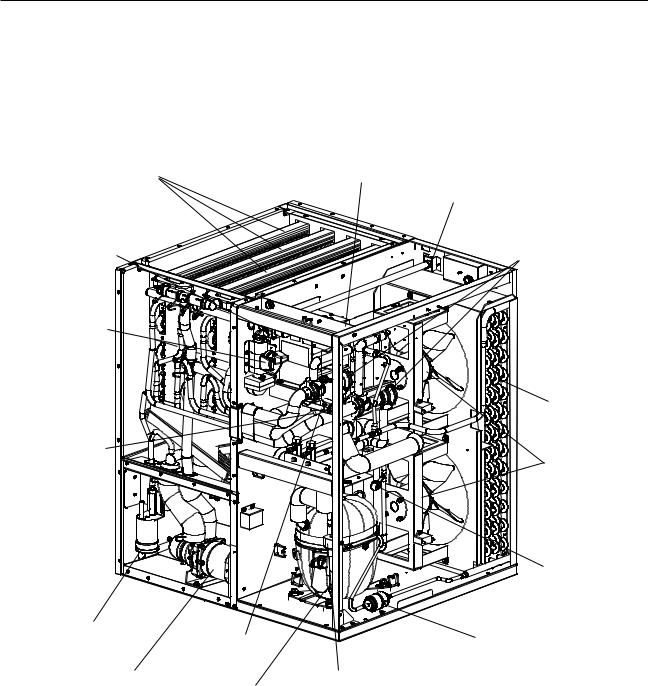
I. Construction and Water/Refrigeration Circuit Diagram
A.Construction
1.Air-Cooled Models (MAJ)
Spray Tubes |
Hot Gas Valve |
|
Water Supply Inlet |
Inlet Water Valve |
Thermostatic |
|
|
|
Expansion Valve |
Cleaning Valve |
|
|
Condenser |
Control Switch |
Fan Motor |
|
High-Pressure
Switch
Float Switch |
Control Box |
Drier |
|
||
|
|
|
Water Pump |
Compressor |
Liquid Line Valve |
|
|
Model Shown: KM-901MAJ
7
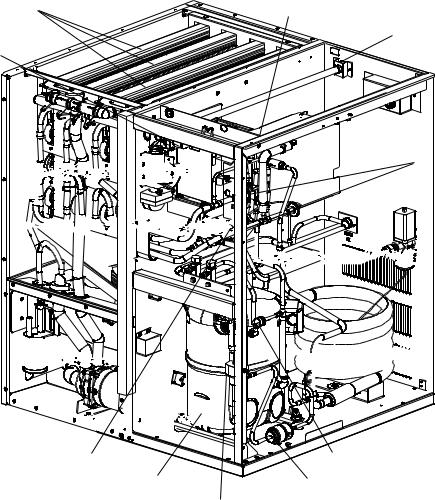
2. Water-Cooled Models (MWJ)
Spray Tubes
Inlet Water Valve
Cleaning Valve







Control Switch 






Float Switch 















Water Pump 









Control Box
Compressor
Liquid Line Valve
Hot Gas Valve
Water Supply Inlet
Thermostatic
Expansion Valve






































 Water
Water
Regulating
Valve

















 Condenser
Condenser
High-Pressure Switch
Drier
Model Shown: KM-1100MWJ
8
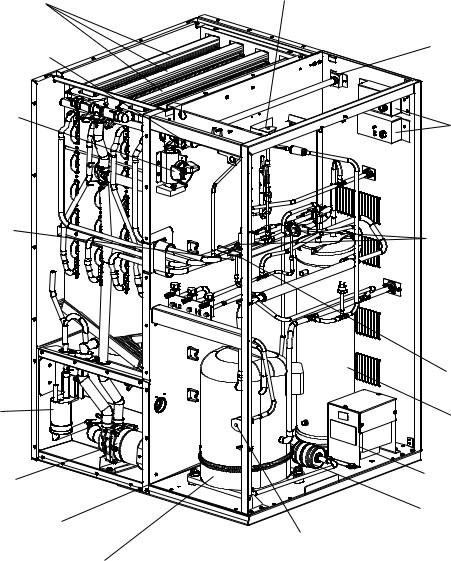
3. Remote Models (MRJ/3)
Spray Tubes |
Hot Gas Valve |
Inlet Water Valve |
Water Supply Inlet |
|
|
Cleaning Valve |
Junction Boxes |
|
Control Switch |
Thermostatic |
|
|
|
Expansion Valves |
|
Control Box |
Float Switch |
Receiver Tank |
|
|
Water Pump |
Main Transformer |
|
|
Crankcase |
Drier |
|
|
Heater |
Liquid Line Valve |
Compressor |
|
|
Model Shown: KM-1601MRJ |
9
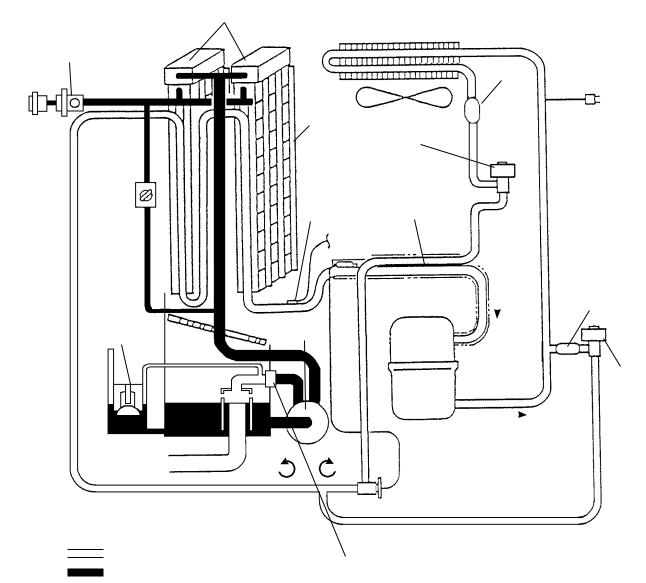
B.Water/Refrigeration Circuit Diagram
1.Air-Cooled Models (MAJ)
Spray Tubes
Condenser
Inlet Water Valve
Water Supply
Float Switch
Water
Tank
Drain
Refrigeration Circuit
Water Circuit
|
|
Drier |
||
Evaporator |
Fan |
|
|
High-Pressure |
|
|
|
Switch |
|
|
|
|
|
|
Liquid Line Valve |
|
|
|
|
|
Heat |
|
|
|
Thermistor |
Exchanger |
|
|
|
|
Suction Line |
|
|
Strainer |
|
|
|
||
|
|
|
|
|
Water Pump |
|
|
|
|
|
|
|
|
Hot Gas |
|
|
|
|
Valve |
|
|
|
|
|
|
Compressor |
Discharge Line |
||
Freeze Pump Out |
|
|
|
|
 Thermostatic Expansion Valve
Thermostatic Expansion Valve
Check Valve
10
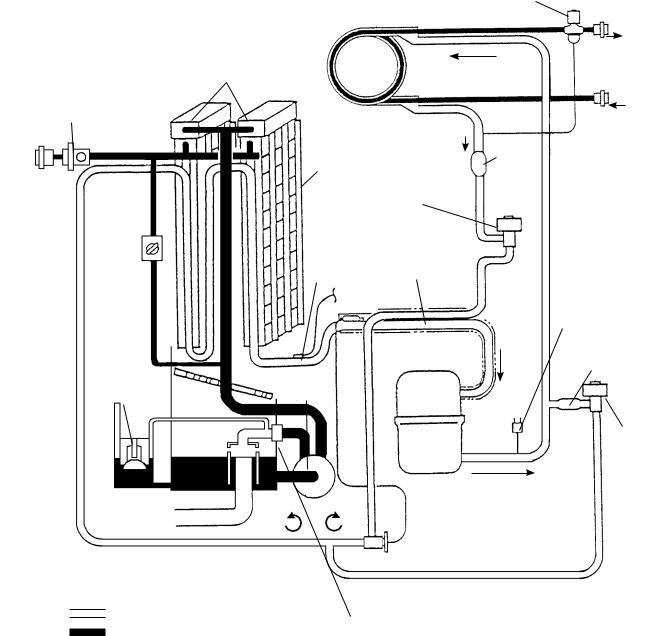
2. Water-Cooled Models (MWJ)
Water Regulating Valve
Condenser
Spray Tubes
Inlet Water Valve
Evaporator |
Drier |
|
|
Water Supply |
|
Liquid Line Valve |
|
|
Heat |
Thermistor |
Exchanger |
High-Pressure
Switch
Suction Line
Strainer
Float Switch |
Water Pump |
|
Water
Tank
Drain
Hot Gas
Valve
Compressor |
Discharge Line |
|
Freeze Pump Out
 Thermostatic Expansion Valve
Thermostatic Expansion Valve
Refrigeration Circuit |
Check Valve |
|
Water Circuit |
||
|
11
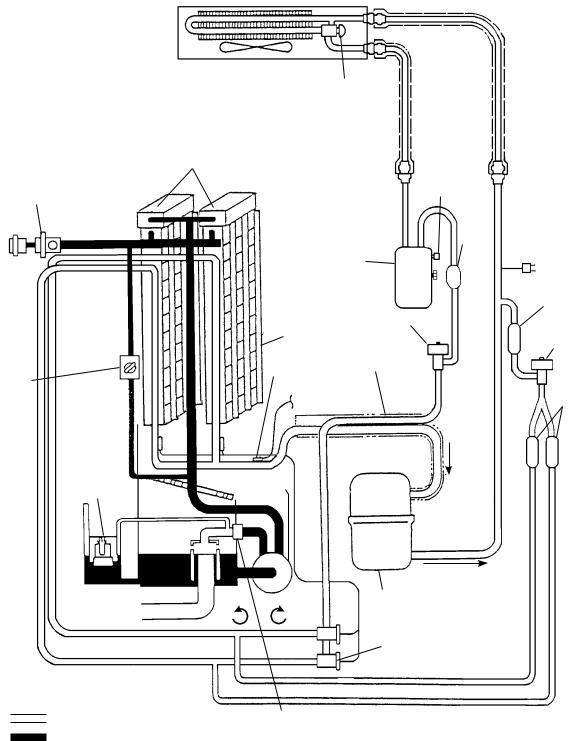
3. Remote Models (MRJ/3)
Condenser
Fan
Headmaster (C.P.R.)
Spray Tubes
Inlet Water Valve
Water Supply
Cleaning Valve
Float Switch
Water
Tank
Drain
Refrigeration Circuit
Water Circuit
Access
Valve
Drier
Receiver
Liquid Line
Evaporator Valve
Heat
Thermistor Exchanger
Suction Line
Water Pump
|
Discharge Line |
Freeze Pump-Out |
Compressor |
 Thermostatic Expansion
Thermostatic Expansion
Valve
Check Valve
High-Pressure
Switch
Strainer
Hot Gas
Valve
Check Valves
12

|
|
|
|
|
|
|
|
|
|
|
|
|
|
|
|
|
|
|
|
|
|
|
Operation Flow Chart |
|
|
|
|
|
.1 |
|||||||||||||||||
|
|
|
|
|
|
|
|
|
|
|
|
|
|
|
|
|
|
|
|
|
|
|
|
|
|
|
|
Operation |
||||||||||||||||||
|
|
|
|
|
1. 1-Minute |
|
|
|
|
|
|
|
|
|
|
|
|
|
|
|
|
|
|
|
|
|
|
|
|
|
|
|
|
|
|
|
|
|
||||||||
Cycle |
|
|
|
|
|
2. Harvest Cycle |
|
|
|
|
|
|
|
|
|
|
|
|
3. Freeze Cycle |
|
4. Pump-Out Cycle |
|
|
|||||||||||||||||||||||
|
|
|
|
|
|
|
|
|
|
|
|
|
|
|
|
|
||||||||||||||||||||||||||||||
|
|
|
|
|
|
|
|
|
|
|
|
|
|
|
|
|
|
|
|
|||||||||||||||||||||||||||
Steps |
|
|
Fill Cycle |
|
|
• WV time: 6 min. or the length of harvest minus HPT |
|
|
|
• Min. freeze time: 5 min. |
• Factory set for every 10th |
|
Flow |
|||||||||||||||||||||||||||||||||
|
|
|
|
|
|
|
|
|
|
|
|
|
|
|
setting (S4 dip switch 6), whichever is shorter. |
|
|
|
• Max. freeze time: freeze timer setting (S4 |
cycle |
|
|||||||||||||||||||||||||
|
|
|
|
|
|
|
|
|
|
|
|
|
|
|
• Max. harvest time: 20 min. |
|
|
|
|
|
|
|
|
|
|
dip switch 9 & 10). |
|
(S4 dip switch 5) |
|
|
||||||||||||||||
|
|
|
|
|
|
|
|
|
|
|
|
|
|
|
|
|
|
|
|
|
|
|
|
|
|
|
|
|
|
|
|
|
|
|
|
|
|
|
|
|
|
• Pump motor stops for |
|
|
||
|
|
|
|
|
|
|
|
|
|
|
|
|
|
|
|
Thermistor |
|
|
|
1 to 3-min. harvest timer in |
|
|
|
5-min. |
|
2 sec., then reverses for |
|
Chart |
||||||||||||||||||
|
|
|
|
|
|
|
|
|
|
|
|
|
|
|
|
|
|
|
|
|
|
|
10/20 sec. |
|
||||||||||||||||||||||
|
|
|
|
|
|
|
|
|
|
|
|
|
|
|
|
|
|
|
|
|
|
|
|
|
|
|
|
|
|
|
|
|
|
|
|
|
|
|
|
|
|
(S4 dip switch 3 & 4) |
|
|
||
|
|
|
|
|
|
|
|
|
|
|
|
|
|
|
|
in control |
|
|
|
|
|
|
control (S4 dip switch 1 & 2) |
|
|
|
|
|
|
minimum |
|
|
|
FS in control |
|
|
|
|
|
|||||||
|
|
|
|
|
|
|
|
|
|
|
|
|
|
|
|
|
|
|
|
|
|
|
|
|
|
|
|
|
|
|||||||||||||||||
|
|
|
|
|
|
|
|
|
|
|
|
|
|
|
|
|
|
|
|
|
|
|
|
Harvest Pump |
|
|
|
freeze timer |
|
in |
|
|
|
|
|
|
|
|
|
|||||||
|
|
|
|
|
|
|
|
|
|
|
|
|
|
|
|
|
|
|
|
|
|
|
|
|
|
|
|
|
|
|
|
|
|
|
|
|
||||||||||
|
|
|
|
|
|
|
|
|
|
|
|
|
|
|
|
|
|
|
|
|
|
|
|
|
|
|
control |
|
|
|
FS opens or freeze |
|
|
|
|
|
||||||||||
|
|
|
|
|
|
|
|
|
|
|
|
|
|
|
|
|
|
|
|
|
|
|
|
Time |
|
|
|
|
|
|
|
|
|
|
|
|||||||||||
|
|
|
|
|
|
|
|
|
|
|
|
|
|
|
|
|
|
|
|
|
|
|
|
|
|
|
|
|
|
|
|
|
|
timer terminates |
|
|
|
|
|
|||||||
|
|
|
|
|
|
|
|
|
|
|
|
|
|
|
|
|
|
|
|
|
|
|
|
|
|
|
|
|
|
|
|
|
|
|
|
|
|
|
|
|
|
|
|
|
|
|
Startup |
|
|
|
|
|
|
|
|
|
|
|
|
|
|
|
|
|
|
|
|
|
|
|
50 sec. |
|
|
|
|
|
|
|
|
|
|
|
|
|
|
|
|
|
|||||
|
|
|
|
|
|
|
|
|
|
|
|
|
|
|
|
|
|
|
|
|
|
|
|
|
|
|
|
|
|
|
|
|
|
|
|
|
||||||||||
|
|
|
|
|
|
|
|
|
|
|
|
|
|
|
|
|
|
|
|
|
|
|
|
|
|
|
|
|
|
|
|
|
|
|
|
|
|
|
|
|
|
|
|
|||
|
|
|
|
|
|
|
|
|
|
|
|
|
|
|
FS closed |
|
|
|
|
|
|
|
|
|
|
|
|
|
|
|
|
FS closed |
|
|
|
|
|
|
|
|
||||||
|
|
|
|
|
|
|
|
|
FS check |
|
|
|
|
|
|
|
|
|
PM energized |
|
|
|
FS check |
|
|
|
|
|
|
|
|
|
|
|||||||||||||
|
|
|
|
|
|
|
|
|
|
|
|
|
|
|
|
|
|
|
|
|
|
|
|
|
|
|
|
|
|
|
|
|
|
|
|
|
|
|
||||||||
|
|
|
|
|
|
WV energized |
|
Comp energized |
|
|
|
WV de-energized |
|
|
Comp energized |
Anti-Slush |
Comp energized |
|
||||||||||||||||||||||||||||
|
|
|
|
|
|
|
Thermistor temperature reaches |
|
|
|
||||||||||||||||||||||||||||||||||||
|
|
|
|
|
|
|
|
|
|
|
|
|
|
FM*/FMR energized |
|
|
FM energized |
Thermistor temperature |
FM*/FMR energized |
|
||||||||||||||||||||||||||
|
|
|
|
|
|
|
|
|
|
|
|
|
|
48°F (9°C) (3.9 kΩ or less). Harvest |
|
|
|
|||||||||||||||||||||||||||||
13 |
|
|
|
|
|
|
|
|
FS open |
|
HGV energized |
|
|
FMR energized |
reaches 36°F (2.2°C) |
HGV energized |
|
|||||||||||||||||||||||||||||
|
|
|
|
|
|
|
|
|
timer starts. |
|
|
|
|
|
|
|
|
|
|
|||||||||||||||||||||||||||
|
|
|
|
|
|
|
|
|
WV energized |
|
|
|
|
|
|
|
|
|
PM energized |
(5.8 kΩ). |
PM de-energizes for 2 sec., |
|
||||||||||||||||||||||||
|
|
|
|
|
|
|
|
|
|
|
|
|
|
|
|
|
|
|
|
|
|
|
|
|
|
|
|
|||||||||||||||||||
|
|
|
|
|
|
|
|
|
|
|
|
|
|
|
|
|
|
|
|
|
|
|
|
|
|
|
|
|
|
|
|
|
LLV energized |
PM de-energized for |
then reverses for 10/20 sec. |
|
||||||||||
|
|
|
|
|
|
|
|
|
|
|
|
|
|
|
|
|
|
|
|
|
|
|
|
|
|
|
FS open |
|
|
HGV de-energized |
10 sec. |
FM* de-energized |
|
|||||||||||||
|
|
|
|
|
|
|
|
|
|
|
|
|
|
|
|
|
|
|
|
|
|
|
|
|
|
|
|
|
|
|
|
|
|
|
|
|
|
LLV de-energized |
|
|||||||
|
|
|
|
|
|
|
|
|
|
|
|
|
|
|
|
|
|
|
|
|
|
|
|
|
|
|
|
|
|
|
|
|
|
|
|
|
|
|
||||||||
|
|
|
|
|
|
|
|
|
|
|
|
|
|
|
|
|
|
|
|
|
|
|
|
|
|
|
|
|
|
|
|
|
|
|
|
|
|
|
|
|||||||
|
|
|
|
|
|
If FS is open, Comp stops and cycle |
|
|
|
|
|
|
|
|
|
|
|
|
|
|
|
|
|
|
|
|
|
|
|
|
|
|
|
|||||||||||||
|
|
|
|
|
returns to 1-Min. fill. |
|
|
|
|
|
|
|
|
|
|
|
|
|
|
|
|
|
|
|
|
|
|
|
|
|
|
|
|
CB: 2A7664-02 |
|
|||||||||||
|
|
|
|
|
|
|
|
|
|
|
|
|
|
|
|
|
|
|
|
|
|
|
|
|
|
|
|
|
|
|
|
|
|
|
|
|
|
|
|
|
|
|||||
|
|
|
|
|
|
|
|
|
|
|
|
|
|
|
|
|
|
|
|
|
FM* – FM energized in 2. Harvest Cycle and |
When freeze time differential exceeded, |
|
|||||||||||||||||||||||
|
|
|
|
|
|
|
|
|
|
|
|
|
|
|
|
|
|
|
|
|
freeze-time correction cycle starts. |
|
||||||||||||||||||||||||
|
|
|
|
|
|
|
|
|
|
|
|
|
|
|
|
|
|
|
|
|
4. Pump-Out Cycle when connected to CB K1 |
|
||||||||||||||||||||||||
|
|
|
|
|
|
|
|
|
|
|
|
|
|
|
|
|
|
|
|
|
See "II.A.3. Freeze-Time Correction Chart." |
|||||||||||||||||||||||||
|
|
|
|
|
|
|
|
|
|
|
|
|
|
|
|
|
|
|
|
|
connector pin #9. |
|
|
|
|
|
|
|
|
|
|
|
|
|
|
|
|
|
||||||||
|
|
|
|
|
|
|
|
|
|
|
|
|
|
|
|
|
|
|
|
|
|
|
|
|
|
|
|
|
|
|
|
|
|
|
|
|
|
|
|
|
|
|
|
|||
|
|
|
|
|
|
|
|
|
|
|
|
|
|
|
|
|
|
|
|
|
|
|
|
|
|
|
|
|
|
|
|
|
|
|
|
|
|
|
|
|
|
|
|
|
|
|
|
Legend: |
|
|
|
|
|
|
|
|
|
|
|
|
|
|
|
|
|
|
|
|
|
|
|
|
|
|
|
|
|
|
|
|
|
|
|
|
|
|
|
|
|
|
|||
|
BC–bin control |
|
|
|
|
|
|
|
|
|
|
|
|
|
|
|
|
|
|
|
|
|
|
|
|
|
|
|
|
|
|
|
|
|
|
|
||||||||||
|
CB–control board |
|
|
Components Energized when the Control Switch is in the "WASH" Position |
|
|
|
|
||||||||||||||||||||||||||||||||||||||
|
Comp–compressor |
|
|
The "WASH" position on the control switch is used when cleaning and sanitizing the unit. When in the "WASH" position, power is supplied |
|
|
|
|
||||||||||||||||||||||||||||||||||||||
|
FM*–fan motor |
|
|
to the pump motor. With the cleaning valve closed, the cleaner and sanitizer flow over the outside of the evaporator plate assembly. With the |
|
|
|
|
||||||||||||||||||||||||||||||||||||||
|
FMR–fan motor-remote |
|
|
cleaning valve open, the cleaner and sanitizer flow over both the outside and the inside of the evaporator plate assembly. |
|
|
|
|
||||||||||||||||||||||||||||||||||||||
|
FS–float switch |
|
|
Note: Close the cleaning valve after cleaning and sanitizing are complete, otherwise the unit will not restart when the control |
|
|
|
|
||||||||||||||||||||||||||||||||||||||
|
HGV–hot gas valve |
|
|
switch is placed in the "ICE" position. |
|
|
|
|
|
|
|
|
|
|
|
|
|
|
|
|
|
|
|
|
|
|
|
|||||||||||||||||||
|
HPT–harvest pump time |
|
|
|
|
|
|
|
|
|
|
|
|
|
|
|
|
|
|
|
|
|
|
|
|
|
|
|
|
|
|
|
|
|
|
|
||||||||||
|
LLV–liquid line valve |
|
|
|
|
|
|
|
|
|
|
|
|
|
|
|
|
|
|
|
|
|
|
|
|
|
|
|
|
|
|
|
|
|
|
|
||||||||||
|
PM–pump motor |
|
|
|
|
|
|
|
|
|
|
|
|
|
|
|
|
|
|
|
|
|
|
|
|
|
|
|
|
|
|
|
|
|
|
|
||||||||||
|
|
|
|
|
|
|
|
|
|
|
|
|
|
|
|
|
|
|
|
|
|
|
|
|
|
|
|
|
|
|
|
|
|
|
|
|||||||||||
|
WV–inlet water valve |
|
|
|
|
|
|
|
|
|
|
|
|
|
|
|
|
|
|
|
|
|
|
|
|
|
|
|
|
|
|
|
|
|
|
|
||||||||||
|
|
|
|
|
|
|
|
|
|
|
|
|
|
|
|
|
|
|
|
|
|
|
|
|
|
|
|
|
|
|
|
|
|
|
|
|
|
|
|
|
|
|
|
|
|
|
Chart Flow Operation of Sequence .A |
Service and Operation of Sequence .II |
|
Diagnosis |
|
|

14
Shutdown Flow Chart
Shutdown |
|
|
1. Bin Full |
2. Icemaker Off |
3. Ice Level Lowered |
|||
and Restart |
Shutdown Delay: |
All components |
Icemaker starts at |
|||||
|
|
|
|
|
• Fill Cycle–15 sec. after activation. |
de-energized. |
"1. 1-Minute Fill Cycle." |
|
|
|
|
|
|
• Harvest Cycle–At the end of the harvest cycle, or up |
|
|
|
|
|
|
|
|
to 15 sec. into the freeze cycle if |
|
|
|
|
|
|
|
|
activated at the end of the harvest cycle. |
|
|
|
|
|
|
|
|
• Freeze Cycle–15 sec. after activation if activated at least |
|
|
|
|
|
|
|
|
15 sec. before the 5-min. short cycle protection |
|
|
|
|
|
|
|
|
timer terminates. Otherwise, at the end of the next |
|
|
|
|
|
|
|
|
harvest cycle. |
|
|
|
BC Operation |
|
|
|
|
|
|
|
To 1. 1-Minute Fill Cycle |
|
|
|
|
|
|
|
||
BC open (BC actuator paddle engaged) Green "BC CLOSED" LED off
Yellow "BC OPEN" LED on
Yellow "BC OPEN" LED continues. All |
BC closed |
components de energized. |
(BC actuator paddle disengaged) |
|
Green "BC CLOSED" LED on |
|
Yellow "BC OPEN" LED off |
Control board 2A7664-02 retains freeze-time correction Legend: count data between bin control restarts.
BC–bin control
Chart Flow Shutdown .2
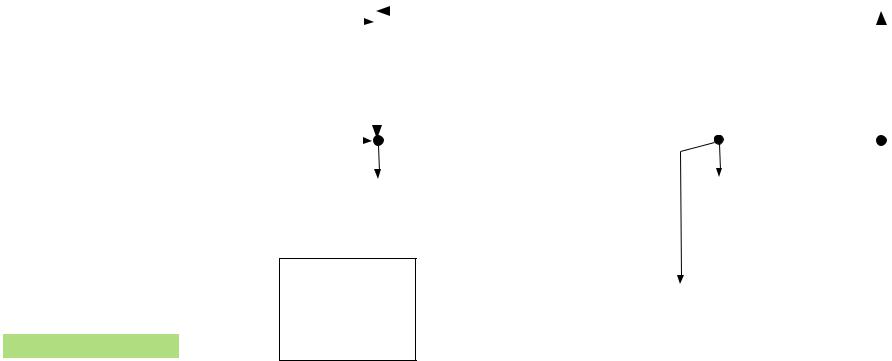
15
Freeze Time Differential Exceeded. Minimum and Maximum Freeze times have exceeded differential parameters.
Freeze-Time Correction function is enabled when S4 Dip Switch 7 is in the "ON" position. CB monitors freeze time. After 3 freeze cycles, CB compares the minimum and maximum differential of the 3 freeze cycle times. Every freeze cycle time after the third freeze cycle time is added to the minimum/ maximum calculation.
Example: After 8 cycles, if the differential between the shortest cycle (minimum) and the longest cycle (maximum) is equal to or greater than 427 sec. a freeze-time correction cycle is initiated:
Number of |
Differential |
Freeze Cycles |
Value in Sec. |
|
|
3 |
254 |
|
|
4 |
309 |
|
|
5 |
349 |
|
|
6 |
380 |
|
|
7 |
406 |
|
|
8 |
427 |
|
|
9 |
446 |
|
|
10 |
462 |
|
|
|
2A7664-02 Freeze-Time Correction Flow Chart |
|
|
.3 |
||||||
|
|
|
|
|
|
|
|
|
|
-Freeze |
Cycle Steps |
|
|
|
|
1. 10-Minute Harvest Cycle with WV |
|
2. 10-Minute Fill/ |
|
Time |
|
|
|
|
|
|
|
|
||||
Steps 1 and 2 repeat |
|
|
• Do not adjust S4 dip switch 7 out of the factory position. |
|
Overflow |
|
|
|||
4 times (total 80 min.), |
|
|
• After step 2 completes 4th sequence (80 min. completed), repeat |
|
|
|
|
|||
|
|
step 1 for 5th and final time. |
|
|
|
Correction |
||||
then step 1 repeats for |
|
|
|
|
|
|||||
|
|
|
|
|
|
|
||||
a 5th time to complete |
|
|
|
|
|
|
|
|||
Freeze Time Correction |
|
|
|
|
|
|
|
|||
Cycle. |
|
|
|
|
|
|
|
|||
|
Start |
|
|
|
|
|
|
|
|
Chart |
|
|
|
|
|
|
|
|
|
||
|
|
|
|
Comp energized |
WV energized |
|
||||
|
|
|
|
|
|
|||||
|
|
|
|
FMR energized |
Comp de-energized |
|
|
|||
|
|
|
|
HGV energized |
FMR de-energized |
|
|
|||
|
|
|
|
PM energized |
HGV de-energized |
|
|
|||
|
|
|
|
WV energized |
PM de-energized |
|
|
|||
Legend: Comp–compressor
FM–fan motor FMR–fan motor-remote HGV–hot gas valve
PM–pump motor WV–inlet water valve
After 5th 10-Minute Harvest Pump Cycle with WV Freeze-Time Correction Cycle Complete.
Go to Step "3. Freeze Cycle" in Operation Flow Chart.
Note: When 1st freeze-time correction cycle is initiated, CB "POWER OK" LED starts blinking. On 2nd freeze-time correction cycle, if CB "POWER OK" LED has been reset,
CB "POWER OK" LED starts blinking. If CB "POWER OK" had not been reset after 1st freeze-time correction cycle CB "POWER
OK" LED continues to blink.
After 3rd freeze time correction cycle in
36 hours, CB yellow "EXT HARVEST" LED starts blinking.
Appliance continues to operate and LEDs continue to blink until ALARM RESET button is pressed with power on.
Appliance Cycle Reset and Alarm Reset:
Cycle Reset: Power Supply or Control Switch Turned Off and On again: Appliance turns off, then re-starts at 1.Fill Cycle.
Alarm Reset: CB "ALARM RESET" pressed during or after a freeze-time correction cycle with power supply on:
Appliance continues cycle with no interruption or reset. CB red "POWER OK" LED blinking:
CB red "POWER OK" LED resets to solid.
CB yellow "EXT HARVEST" LED blinking: CB yellow "EXT HARVEST: LED turns off.
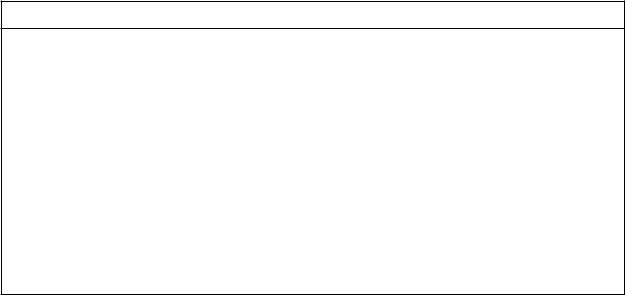
B. Service Diagnosis
 WARNING
WARNING
•The appliance should be diagnosed and repaired only by qualified service personnel to reduce the risk of death, electric shock, serious injury, or fire.
•Risk of electric shock. Control switch in "OFF" position does not de energize all loads Use extreme caution and exercise safe electrical practices.
•Moving parts (e.g., fan blade) can crush and cut. Keep hands clear.
•Before servicing the appliance, move the control switch to the "OFF" position and turn off the power supply.
•CHOKING HAZARD: Ensure all components, fasteners, and thumbscrews are securely in place after the appliance is serviced. Make sure that none have fallen into the dispenser unit/ice storage bin.
•Make sure all food zones in the appliance and dispenser unit/ice storage bin are clean after service.
The diagnostic procedure is a sequence check that allows you to diagnose the electrical system and components. Before proceeding, check for correct installation, proper voltage per nameplate, and adequate water supply. Check CB using the steps in "II.D. Control
Board Check." Check dip switch settings to assure that S4 dip switches and S5 dip switches 1 through 5 are in the factory default position. S4 dip switch 1, 2, 3, 4, and 5 are cleaning adjustments and the settings are flexible. For factory default settings,
see "III.C.1. Default Dip Switch Settings."
Note: • On 208-230/60/1 models with main transformer and 208-230/60/3 models, the appliance neutral (W) is provided through the main transformer. To confirm a good neutral, check for 60VAC from white (W) neutral to ground (GND).
If 60VAC is present, neutral is good. If 60VAC is not present, check 208-230VAC main power supply to main transformer. If 208-230VAC is present, check main transformer continuity.
•When checking voltage from the CB K1 connector (10 pin connector), pull
CB K1 connector out slightly to allow room for multimeter test leads contact.
1)Turn off the power supply, then access the control box. Move the control switch to the "OFF" position. Clear any ice from BC bulb.
2)Check that BC is closed and the 115VAC 10A fuse is good.
16
1.Sequence and Component Diagnosis
3)Power On: Turn on the power supply, then move the control switch to the "ICE" position. A 5 sec. delay occurs. CB red "POWER OK" LED and CB green "BC CLOSED" LED
turn on. If CB yellow "BC OPEN" LED is on (indicating a full bin), check CB K4 red jumper. Move ice away from BC bulb.
Note: • CB red "POWER OK" LED remains on unless the 10.5VAC power supply is interrupted (K2 connector).
•Check CB using the steps in "II.D. Control Board Check."
•Confirm CB green "BC CLOSED" LED is on. If CB yellow "BC OPEN" LED is on, confirm CB K4 jumper is in place. Otherwise, CB yellow "BC OPEN" LED is on and appliance will not start.
a)Power On Diagnosis: If CB red "POWER OK" LED is off, confirm 10A fuse is good. Check for 115VAC at control switch #1 (BR) to neutral (W) then at control switch
#2 (P) to neutral (W). If 115VAC is present on #1 (BR) and not on #2 (P), replace control switch. If 115VAC is present on control switch #2 (P), check for 115VAC at HPS (P) to neutral (W) then HPS (BK) to neutral (W). If 115VAC is present at HPS
(P)and not at HPS (BK), HPS is open. See HPS Diagnosis below. If 115VAC is present at HPS (BK), check for 10.5VAC at CB K2 #1 red wire to CB K2 #2 red wire. If 10.5VAC is not present, check that the cleaning valve is closed and the interlock switch is closed. Next, check CT continuity. If open, replace CT.
b)HPS Diagnosis: Check that the condenser coil is not clogged or restricted. Let refrigeration circuit pressures equalize. If HPS does not reset and pressures are equalized, replace HPS. If pressures are not equalized, reclaim refrigerant and diagnose refrigeration circuit restriction. Check that there are no restrictions in the refrigeration circuit.
Harvest Cycle: HGV, strainer, or check valve.
Freeze Cycle: FM, FMR, TXV, WRV, HM, LLV, strainer, check valve, drier, and damaged line set or fitting.
Confirm that the location meets installation requirements:
•The appliance is not intended for outdoor use. Normal operating ambient temperature should be within 45°F to 100°F (7°C to 38°C).
•Allow 6" (15 cm) clearance at rear, sides, and top for proper air circulation and ease of maintenance and/or service should they be required.
•The appliance should not be located in a corrosive environment.
17
4) 1-Min. Fill Cycle – LED 4 is on. WV and X11 relay energize. After 1 min., CB checks for a closed FS. If FS is closed, the harvest cycle begins. If harvest cycle begins (Comp, HGV, FM*, FMR energized), continue to step 5a. If FS is open, WV remains energized until FS closes (low water safety protection during initial start up and at the end of each harvest). Diagnosis: Check that water enters the water tank. If not, check that the water supply line shut-off valve is open and screens or external filters are clear. Check for
115VAC at CB K1 #6 (O) to neutral (W). If 115VAC is not present, replace CB. If 115VAC is present, and WV does not energize, check for 115VAC at WV. If 115VAC is present, check coil continuity. If open, replace WV. If the water tank fills, but the appliance fails to start harvest (Comp energized), check for open FS. See "II.F. Float Switch Check and
Cleaning." If FS is closed and CB fails to start the harvest cycle after 1 min., replace CB.
5a) Initial Harvest Cycle – LEDs 1, 4, and 2 are on. WV and X11 relay continue. Comp,
FM* (if connected to CB K1 connector pin #9), FMR, HGV, and X10 relay energize. CB monitors the warming of the evaporator via the thermistor located on the suction line. When the thermistor reaches 48°F (9°C), CB reads 3.9 kΩ from the thermistor and turns harvest termination over to the harvest timer (S4 dip switch 1 & 2 and S5 dip switch 4). WV and X11 relay are energized during harvest for a maximum of 6 min. or the length of harvest minus HPT setting (S4 dip switch 6), whichever is shorter. See step 5b below.
a)Comp Diagnosis: Check that evaporator is warming. If not, confirm that Comp energizes. If not, check for 115VAC at CB K1 #1 or #9 (V) to neutral (W). If 115VAC is not present, check for 115VAC at CB K1 #7 or #10 (BR) to neutral (W). If 115VAC is present at #7 or #10 (BR) and not at #1 or #9 (V), replace CB. If 115VAC is present, check for 115VAC at CR or MC solenoid. If 115VAC is present, confirm contacts are closed. If not, replace CR or MC. If CR or MC contacts are closed, check Comp external overload, Comp start and run capacitors, Comp start relay, and Comp motor winding.
b)HGV Diagnosis: If Comp is energized and evaporator is not warming, check that HGV energizes and opens. Check for 115VAC at CB K1 #2 (P) to neutral (W).
If 115VAC is not present, replace CB. If 115VAC is present, check for 115VAC at HGV coil and check HGV coil continuity. Replace as needed.
c)LLV Diagnosis: Confirm that LLV is de-energized and closed (not bypassing).
If energized, replace CB. If de-energized and bypassing, replace LLV.
d)WRV Diagnosis: Confirm WRV is not leaking by. If WRV is leaking by, confirm HGV is open and LLV is closed. Next, check for proper refrigerant pressures. If refrigerant pressures are correct, adjust or replace WRV. See "IV.C. Water Regulating Valve
Adjustment (water cooled models).
18
5b) Harvest Pump Timer – LEDs 1, 3, and 2 are on. When the thermistor reaches 48°F
(9°C), CB reads 3.9 kΩ from the thermistor and turns harvest termination over to the harvest timer (S4 dip switch 1 & 2 and S5 dip switch 4). When WV de-energizes,
LED 4 turns off, X11 relay de-energizes and LED 3 turns on. PM energizes. Comp, FM*, FMR, HGV, and X10 relay continue.
Diagnosis: Place a thermometer on the suction line next to the thermistor. Has it warmed to 48°F (9°C) or warmer? Confirm thermistor status. See "II.G. Thermistor Check." If the thermistor reading is in proper range, dip switch 7 is on, and PM does not energize before harvest terminates, replace CB. If WV continues, check for 115VAC at CB K1 #6 (O). If 115VAC is present, and LED 4 is off, replace CB. If LED 3 is on and PM is not energized, check for 115VAC at CB K1 #5 (DBU). If 115VAC is not present, replace CB. If 115VAC is present and PM is not energized, check for 115VAC at X10 relay terminal #7 (Y) to neutral (W). If 115VAC is not present, check for 115VAC at X10 relay terminal #3 (P) to neutral (W) and X10 relay terminal #5 (Y) to neutral (W). If 115VAC is present on terminal #3 (P) and not on terminal #5 (Y), replace X10 relay.
If 115VAC is present on X10 relay terminal #7 (Y) and PM is not energized, check for
115VAC at X10 relay terminal #4 (R) to neutral (W) and terminal #6 (DBU) to neutral
(W). If 115VAC is present on terminal #6 (DBU) and not on terminal #4 (R), replace
X10 relay. If 115VAC is present on X10 relay terminal #4 (R), check control switch contact continuity between terminals #4 (R) and #5 (W/R). If contacts are open, replace control switch. If contacts are closed and 115VAC is present between control switch terminal #5 (W/R) and neutral (W), check PM capacitor and motor winding continuity.
5c) Initial Harvest Cycle Termination Diagnosis: When the thermistor reaches 48°F
(9°C), CB reads 3.9 kΩ from the thermistor and turns harvest termination over to the harvest timer (S4 dip switch 1 & 2 and S5 dip switch 4). Check discharge line temperature. For a thermistor check, see "II.G. Thermistor Check." If 1-min. fill cycle
starts after harvest timer terminates, check that FS is clean and operating properly, see "II.F. Float Switch Check and Cleaning." If FS is closed, CB proceeds to the next cycle.
If not, replace CB.
Note: The minimum total time allowed by CB for a complete harvest cycle is based on S5 dip switch 4. Maximum harvest time allowed is 20 min.
NOTICE! S4 dip switch 7 must remain on. Otherwise, PM will not energize during the last seconds of harvest.
6) Freeze Cycle – LED 1 is on. Comp, FM*, FMR, and PM continue. FM and LLV energize. HGV and X10 relay de energize. Appliance is held in freeze by a 5-min. short cycle protection timer. After 5-min. short cycle protection timer terminates and FS opens, freeze cycle terminates.
Note: PM power supply switches from CB K1 #5 (DBU) in harvest to K1 #4 (R) in freeze. Anti-Slush: When anti-slush is enabled (S5 dip switch 5 "ON"), PM de-energizes when thermistor reaches 36°F (2.2°C) (5.8kΩ) for 10 sec. then, energizes for the remainder of the freeze cycle.
19
a)Freeze Cycle Diagnosis: Confirm Comp, FM*, FMR, and PM continue. Confirm that FM and LLV energize. Confirm WRV opens. Next, confirm HGV and X10 relay de-energize. During the first 5 min. of freeze, confirm evaporator is cooling. If not, confirm WV de-energized (not leaking by), HGV de-energized (not bypassing), LLV and FM energize, TXV and HM operate correctly, WRV opens, Comp is efficient, and refrigerant charge is correct. See "VIII.A. Specification and Performance Data
Sheets."
b)Comp, FM*, and FMR Diagnosis: If Comp, FM*, and FMR de-energize once freeze begins, check that appliance has not shut off on HPS ("POWER OK" LED off). If so, check "3)b) HPS Diagnosis" above. If CB "POWER OK" LED is on, check for 115VAC at CB K1 #1 (V) or #9 (V) to neutral (W). If 115VAC is not present and LED 1 is on, replace CB. If 115VAC is present, check for 115VAC at CR or MC coil. If 115VAC is present, check CR or MC coil and contact continuity. Replace as needed. If CR or MC is okay, check Comp start relay and start and run capacitors. Next, check Comp motor winding continuity. If Comp is energized but evaporator is not cooling, check for an inefficient Comp. See "VIII.A. Specification and Performance Data Sheets." FM* Diagnosis: If Comp is energized but FM* is not, check CB K1 #1 (V) and #9
(V) wiring circuit for loose connection. If connections are good, check FM* capacitor,
motor winding, and blade for binding.
FMR Diagnosis: If Comp is energized but FMR is not, check for 115VAC at the FMR junction box. If 115VAC is not present, check icemaker wiring connections. If 115VAC is present, check for voltage at condenser unit. If 115VAC is not present, check field wiring connections. If 115VAC is present, check FMR capacitor, motor winding, and fan blade for binding.
c)WV and HGV Diagnosis: If WV is energized, check for 115VAC at CB K1 #6 (O) to neutral (W). If 115VAC is present after PM energizes in harvest cycle, replace CB. If 115VAC is not present, replace WV (bypassing). If HGV did not de energize at the end of harvest, check for 115VAC at CB K1 #2 (P) to neutral (W). If 115VAC is present 50 sec. after PM energizes, replace CB. If 115VAC is not present, replace HGV (bypassing).
d)PM Diagnosis: Confirm water is flowing over evaporator from PM and not WV. If PM de-energizes once freeze begins, check for 115VAC at CB K1 #4 (R) to neutral (W). If 115VAC is not present, replace CB. If 115VAC is present and PM is de-energized, check for 115VAC at control switch #5 (W/R) to neutral (W). If 115VAC is present at CB K1 #4 (R) and not at control switch #5 (W/R), check control switch continuity between #5 (W/R) and #4 (R). Replace as needed. If 115VAC is present at control switch #5 (W/R) to neutral (W), check PM capacitor and motor winding continuity.
e)FM and LLV Diagnosis: If FM or LLV does not energize, check for 115VAC at CB K1 #3 (BK) to neutral (W). If 115VAC is not present, replace CB. If 115VAC is present:
For FM, check capacitor, motor winding, and blade for binding.
For LLV, check coil voltage and continuity.
20

f)Refrigerant Pressures, HM, and TXV Diagnosis: If evaporator is still not cooling, check refrigerant pressures. See "VIII.A. Specification and Performance Data Sheets."
Next, check HM operation. If refrigeration pressures are above HM setpoint and HM is bypassing, replace HM. Check TXV for proper operation. Remove TXV bulb and hold it in your hand, refrigerant low-side pressure should rise, place TXV bulb in
ice water, refrigerant low-side pressure should drop. A 10 to 15 pound pressure swing between warm and cold conditions indicate a good TXV. If a 10 to 15 pound swing is not present, replace TXV.
g)WRV Diagnosis: WRV is factory set and generally no adjustment is required.
If WRV fails to open in freeze, check for proper refrigerant pressures. See "VIII.A.
Specification and Performance Data Sheets." If refrigerant pressures are correct and
WRV does not open, adjust or replace as needed. See "IV.C. Water Regulating Valve Adjustment (water cooled models)."
h)Freeze Termination Diagnosis: After 5 min. in freeze, disconnect CB K5 FS connector. 15 sec. later appliance should switch out of the freeze cycle (15 second delay after FS opens before terminating the freeze cycle). If appliance remains in freeze longer than 15 sec. after FS removed, replace CB. If appliance switches with FS removed but would previously not switch out of freeze with FS connected (long freeze - 3 beep alarm), see "II.F. Float Switch Check and Cleaning."
Note: Normal freeze cycle will last 20 to 40 min. depending on model and conditions. Cycle times and pressures should follow performance data provided in this manual. See "VIII.A. Specification and Performance Data Sheets."
i)Short Freeze Cycle Diagnosis: Confirm water tank fills and overflows during 1 min. fill and harvest cycles. If not, check water supply filters, shut-off valve, WV screen. If water tank empties before 5 min. timer terminates and freeze cycle is short, check that CV is not leaking by (water flowing down the potable drain). If CV is leaking by, remove and clean CV, replace rubber seat and spring if necessary. If water tank is full, see "II.F. Float Switch Check and Cleaning." for erratic operating FS.
7)Pump-Out Cycle – LEDs 1, 3, and 2 are on (10/20 second pump-out). Timing of the first pump-out is determined by S4 dip switch 5. See the table below.
Control Board Settings
S4 Dip Switch Setting |
Pump-Out Frequency |
Control Board |
|
|
|||
No. 5 |
|||
|
|
||
|
|
|
|
OFF |
Every 10 cycles |
After 11th freeze cycle |
|
ON |
Every cycle |
After 2nd freeze cycle |
|
|
|
|
Comp, FM*, and FMR continue, HGV energize.
Note: If S4 dip switch 3 & 4 are set to 3 off and 4 on, LED 4 turns on and WV and X11 relay energize, energizing X10 relay. NOTICE! S4 dip switch 3 & 4 must not be set to 3 off and 4 on. Otherwise, PM will rotate in freeze cycle direction instead of pump out direction.
21
